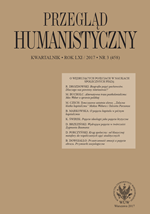
We kindly inform you that, as long as the subject affiliation of our 300.000+ articles is in progress, you might get unsufficient or no results on your third level or second level search. In this case, please broaden your search criteria.

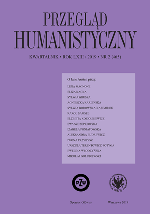
The article is to describe an interesting phenomenon of the duplication of the literary patterns of behaviour among female protagonists created by Jane Austen. The subject of the paper is the analysis of the set books of the heroines invented by the British author in the both social and cultural context. Jane Austen’s novels can be regarded as the treasury of knowledge on the existence of the young girls at that time. The omnipresent conventions took away their right to dreams and self-fulfilment in almost every sphere of life. Lots of them found the coveted hope of improving their lives on the pages of overly aesthetic, sentimental novels. The characters from the books became inspirational among the female sex. The view of young ladies was based on their inner cultivation of the behaviour and mood which were inseparable from the girls from the popular romances. The patterns, continually given by fiction, took the place of humanistic and scientific knowledge, making the girls unaware – without the simplest information about the world. The subjects given in a wrong way by wrong teachers lowered their interest in education among youth, which also led to the popularity of sentimental, historical (especially those presenting the romance on the background of crucial events form the history of the given country) and Gothic novels. The text will concern the analysis of the attitude of the heroines created by the British author – on the basis of their set books and the position of Jane Austen in the range of literary criticism and the above-mentioned social phenomenon.
More...
The aim of the article is the consideration of the way in which Jane Austen asks in her novels about the status of reality. The subject of the interest are the narrations about “crime” understood as the events breaching the normal social experience and revealing how fragile the reality is. The significant context of the consideration is the classical detective literature. The author proves that the work of Jane Austen can be characterized by the similar reflection on societies in which the project of social reality is entangled. Referring to the conception of Luc Boltanski, she shows that, in the novels of the British writer, crime is a form of “reality testing”. Austen casts in doubt the frames of reality and reveals the conventional dimension of the social life. Her purpose, however, is not to disclose the social world – she sees the possibility of its integration.
More...
The graphic designs proposed by Polish publishers cannot be compared neither in number, nor in diversity to those presented by Margaret C. Sullivan in Jane Austen Cover to Cover: 200 Years of Classic Book Covers. Nevertheless, they are a valuable and still undiscussed source of knowledge on the Polish reception of Austen’s novels. Further information on this subject is provided in the first part of the paper by a compilation of book series in which some or all of the texts by Austen have appeared since the 1990s. The analysis of the book covers takes into consideration the relation between the design and the content of the narrative as well as the character of the artwork and its origin. The most popular were 19th century paintings (portraits, genre scenes, less frequently landscapes), film stills from the movie adaptations and floral patterns. As one of the aims of the study was to answer the question how the covers direct the reading process and place the text in the literary tradition, the remarks on the publishers’ choices were supplemented with the readers’ reviews. In the conclusion, it was suggested how the potential, new editions could be designed to stand out from the former ones.
More...
The subject of the article is the reception of Jane Austen in the sphere of e-culture – its fragment connected to websites and discussion forums concerning the writer. The phenomenon of “Austen mania” starts in Poland mainly because of the popularity of the movies based on Jane Austen prose. These sites and forums played not only a popularizing role, spreading the knowledge about the writers’ biography, work, film adaptations, or Regency, but they also grouped the society of fans who felt the need of being close to the other readers of Austen and some virtual companion in a feminine sphere created by numerous, common interpretation of the behaviour of the heroes of her prose, and also fans’ creativity in the area of gadgets, Regency costumes and literary tourism. The other form of activity is fan fiction, slightly represented on the forums and sites, especially in the comparison to fan fiction around the work of Austen in the English-speaking circle. They are most frequently the translations from The Republic of Pemberley, not prepared, unfinished, fragmentated, or personal attempts of a romance kind, in a style of Harlequin literature and a sentimental tone.
More...
The article is devoted to the works of Emma Tennant, an English writer, the author of, inter alia, the continuation of Sense and Sensibility, Emma, as well as Pride and Prejudice. A characteristic feature of Tennant’s writing was the ability to give new meanings to the texts and myths of the popular culture – so she did with the story of Elinor and Marianne, or Sylvia Plath, to whom she devoted one of her better texts. The article, based on the example of Emma Tennant’s writing, focuses on the issues of the strategy of creating literature as rewriting and functioning of feminist ideas in the modern literature.
More...
Contemporary (Re)interpretation of Jane Austen’s Novels – about Looking for Freedom is a comparative study of the works of the author of Sense and Sensibility and the British series Taboo. As the main aim of paper the author took the search for analogies in these, far and totally different, as it may seems, texts of culture. Naming after Carrie Vaughn the works of Miss Austen as the “universe mirrors”, the author drew the attention to the modern “reflections” of Austen’s characters (anti-heroes, look-alikes) and today’s reinterpretation of the 19th century. For the palimpsest reading of the Austen’s novel she used the tools of the feminist criticism and the postcolonial theory. It allowed her to observe the femininemasculine relations, the relations based on a master-servant pattern, and, at the end, to analyse the political, social, cultural image of the coloniser and the colonised, which has been made by the colonial regime at that time. The author of the article put these two discourses together in order to prove that the rights of the 19th century wife were limited to those of a slave from the Dark Continent.
More...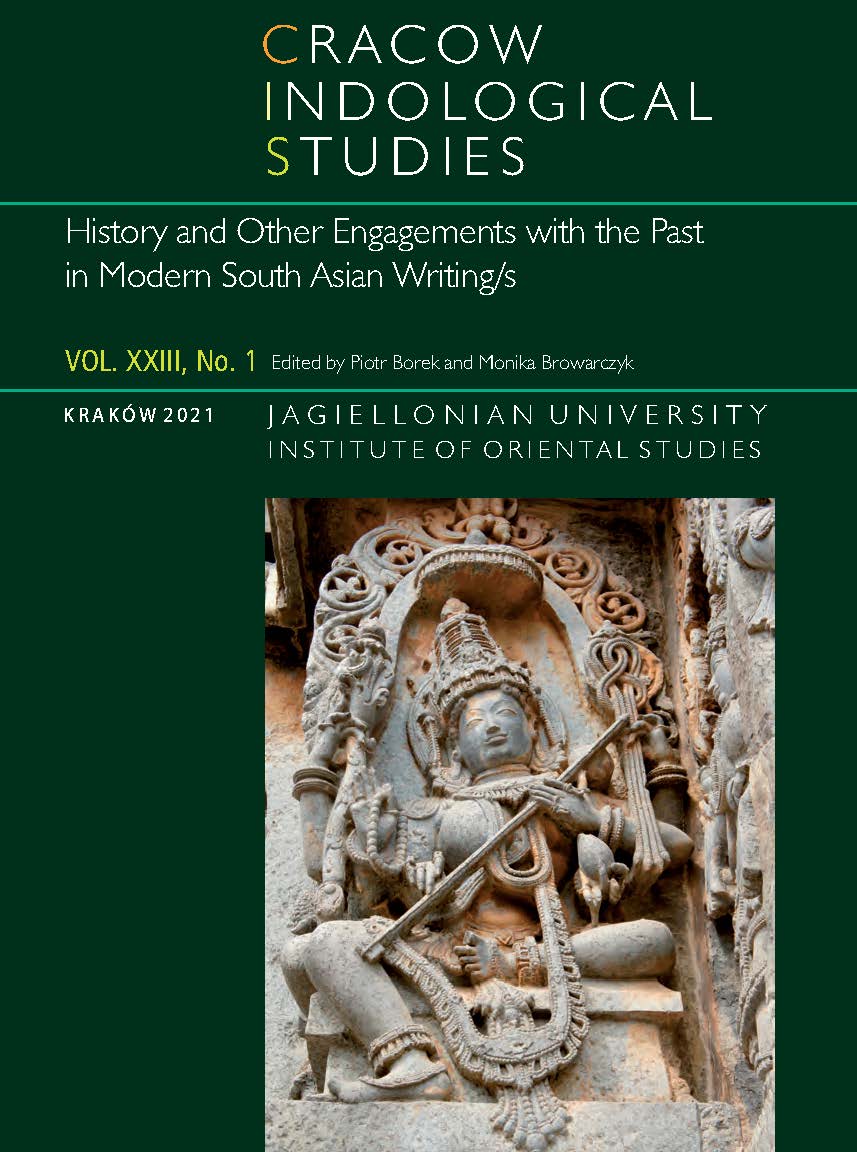
The present paper looks at a fictional account of the Bengal famine of 1943 in order to locate relevant historical information regarding a specific period of time (Chatterjee 2014) and identify elements that would allow it to be read as an example of the ‘prose of the world’ in Ranajit Guha’s understanding of the term (Guha 2002). The narrative of Amr̥tlāl Nāgar’s Bhūkh is framed through author’s recourse to his own experience, artistic and historical research, lived emotions and personal feeling of urgency to record the event. By repeatedly raising the claim of authenticity of his testimonial, Nāgar unwittingly draws us into an investigation of his relationship with the main narrator and the protagonist of his work. This, in turn, reveals the absence of clarity on the part of the author—he seems in two minds when discussing the role of the elites in making of the famine and is unable to either criticise or justify their failure to act. Further, the paper investigates social reality presented in the novel; the naturalistic, progressive aesthetics used in the description of the embodied violence of hunger; and the portrayal of the protagonist whose vantage point makes the story significantly detached from the ‘masses’ depicted variously as insects or savages, driven by hunger and hunger only. Principal focaliser’s upper-caste perspective allows him to feel superior to the less fortunate ‘skeletons’ and ultimately justify his survival by saving a seemingly upper cast infant, the action understood by him as equal to saving the entire human race. However, to my mind, the reality of hunger presented by the protagonist is conventional, self-centred, and lacks in-depth social criticism.
More...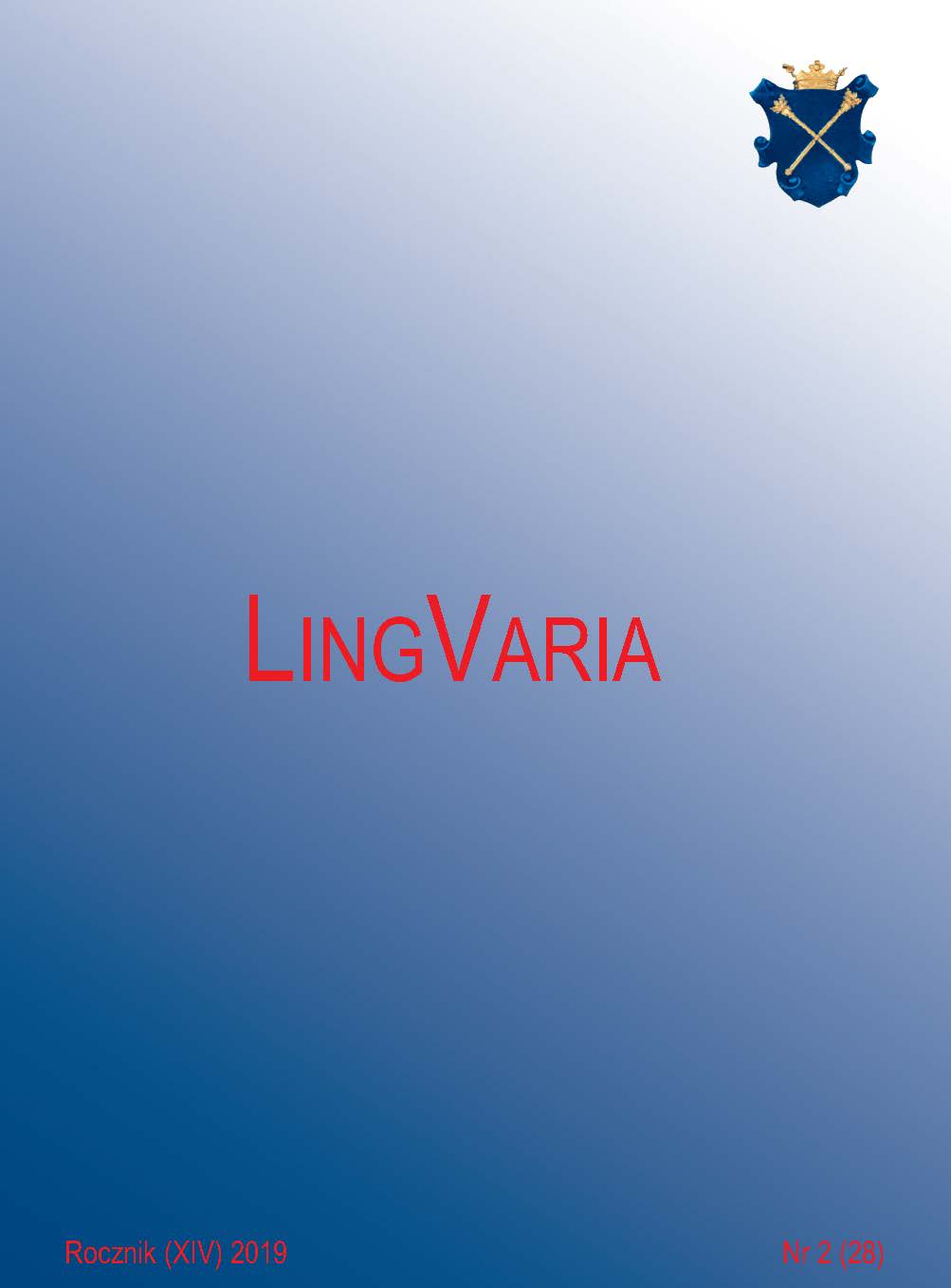
The paper discusses, from the formal, semantic, pragma- and sociolinguistic point of view, the honorificative formula that constituted one of the components of the final part of an epistolary Polish text of the 18th century. Most commonly, it took the shape of a conventionalized phrase which consisted of the preposition z (‘with’), an adjective, and a noun; e.g. z prawdziwym szacunkiem ‘with true respect’. The formula was syntactically dependent, as it was part of a larger whole – nearly always the subscription, i.e. the broadly understood signature of the author of the letter. The lexical composition of the formula showed considerable diversity. The nouns that constituted it include estymacja ‘esteem’, poważenie ‘reverence’, szacunek ‘respect’, weneracja ‘veneration’, and others. The attributes that described the main stem of the formula were also characterized by notable semantic diversity. Moreover, the honorificative formula could also appear in the form of a Latin quotation, e.g. profundo cultu. The usage of the formula depended on social and situational factors, namely it was used in letters to people of equal or higher social status (e.g. to members of princely families), as well as in highly official situations.
More...
Folk erotic poetry, as ‘a song of lovers not yet tied by the knot’, is a genre of text that relates the notion of love and the image of intimate body parts, the roles assigned to woman and to man, as well as social and moral norms in the traditional community. At the base of this genre lie such values as: happiness in love, physical contact, lovers’ openness to the love game, youth and beauty, success and favour, the light-heartedness of the lovers, fun and laughter, freedom, faithfulness and stability; marriage is a relative value, important for the girl, and wealth. Another value that is important in the light of folk erotic poetry, is an able body, sexual performance; the anti-value is a body that is diabled, sick, deprived of its functionality. Deficiency in the art of love, the man’s incompetence or inability to perform a sexual act is for the poetic lover a kind of disability that devalues and disqualifies him as a man and the partner of love act in the eyes of a woman awaiting sexual fulfillment. From the point of view of the heroine, it is justified to describe such a lover (love-cripple) as a disabled or even defunct person. The reason for this unambiguous and stigmatizing categorization is not only the inability to provide the girl (also a young wife by an old man) with erotic pleasure (kochanie ‘touching, moving’), but also to perform the love act which the folk culture understands as a participation in the creative action of the entire cosmos.
More...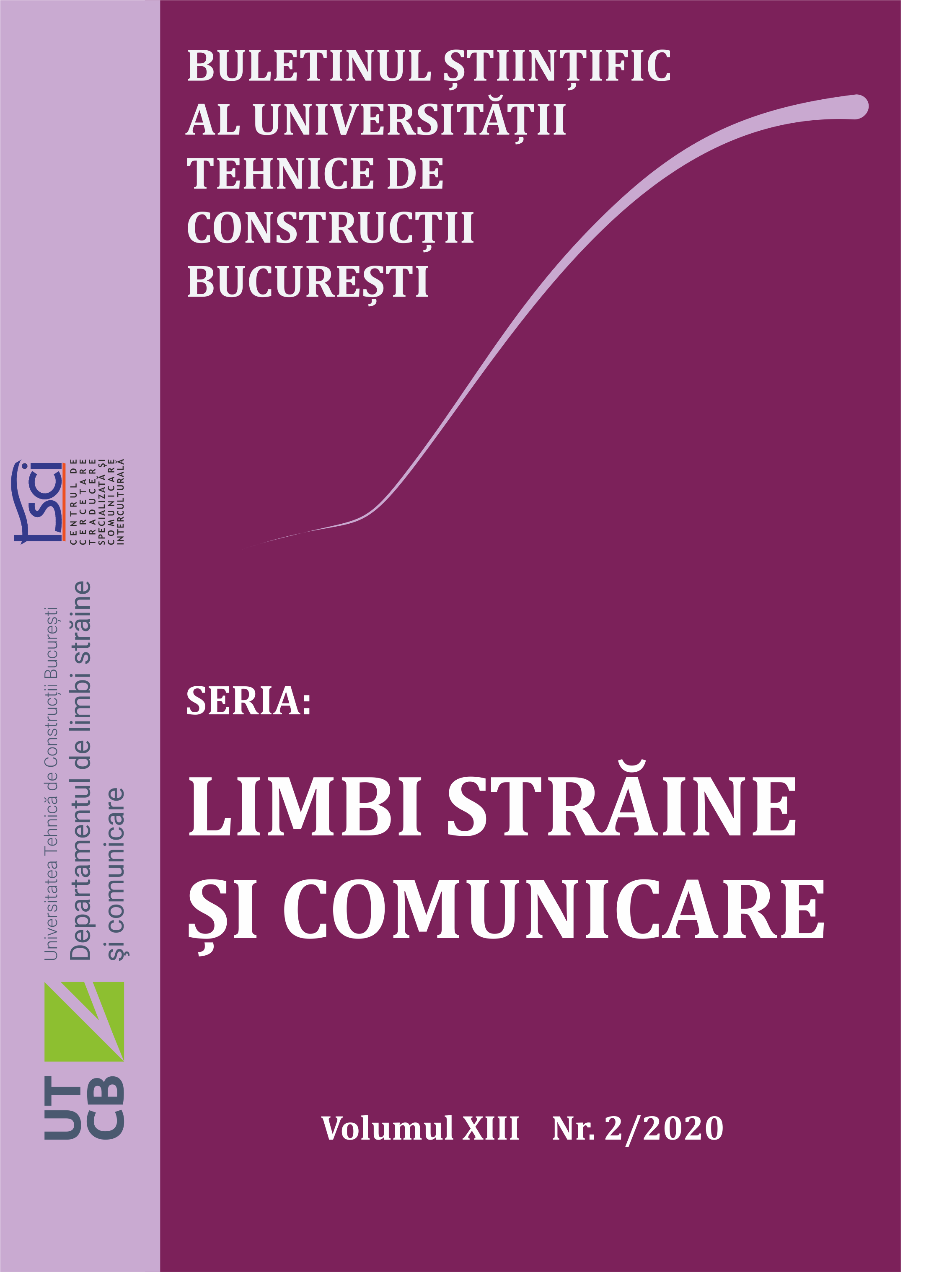
The Decameron represents the maximum of realism in literary art through which Bocaccio laid the foundations of a literary prose and a language used in the following centuries by successive writers. The subjects can be considered of French inspiration, but the action is located in Florence, the cradle of the Italian language but also literature. It is well received in France and its translation inspired Marguerite de Navarre in the later creation of the masterpiece Heptaméron. It is impressive the perfection of Decameron's architecture - 10 young people, 10days, 10 short stories, 10 themes, but also the force with which the author creates situations that react to the darkness of the Middle Ages, freeing the consciousness from the prejudices, counteracting hypocrisy, the false authors of miracles and laying the foundations of a new epoch: The Renaissance.
More...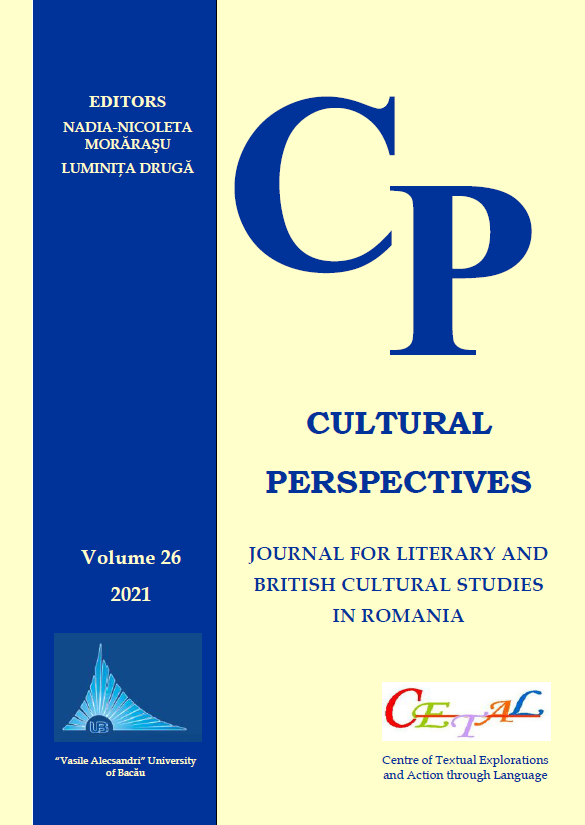
The political censorship in Romania during the communist period set off the so-called exile. Romanian writers, who did not submit to the political regime, leaning towards a realistic, aesthetic, transparent and open literature, waiving the opacity of words and the hiding of truth in their approach, were forced to endure the route to exile.
More...
Translation is a human activity and like all human activities, it has its difficulties and satisfactions. With the aim to enlighten some theories regarding the translations, we are going to explore the studies of the theorists Anca Greere (2003), Hans J. Vermeer (2000) and Christiane Nord (1997). By examining the above theories, our goal is to obtain a clearer view upon the difficulties encountered in the translating activity, on the one hand and on the other, to find the proper way to surpass these difficulties. The translator as a professional has to take into account different aspects in order to comply with the translation task. Thus, the translator has to consider aspects related to the analysis of the source text, this constituting a source of information. On the other hand, the translator has to consider aspects regarding the text type, the text production and the recipient of the target text. In addition to presenting theoretical considerations on functional approaches, the applicative part of our paper will bring to attention four types of translation mistakes, which any translator should avoid and some viable solutions to the problems they pose.
More...
Edgar Allan Poe neither cherished nor appreciated the fundamental standing points of American Transcendentalism, never missing the opportunity to express his “disagreement” with the ideas discussed by some leading figures of this religious, literary and philosophical movement in antebellum America. He criticized their “obscurity for the sake of obscurity“, their being prone to vagueness and imprecission as well as the way they perceived the Universe, the Oneness, the Soul of the World and the Soul of the Individual. The aim of this paper is to highlight Poe’s perspective on Transcendentalism, both on the literary scene of the day and in some of his short stories.
More...
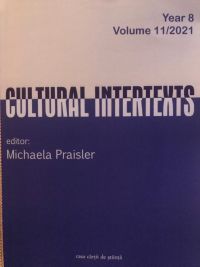
Owing largely to the political situation in the United States, which seems to head, dangerously so, towards a dystopian Gilead, Margaret Atwood’s The Handmaid’s Tale gets, at the end of the 2010s, to be re-told by many voices: that of her original creator – by her writing a sequel, The Testaments (2019) –, but also those assumed in successful transmedial adaptations – the homonymous graphic novel authored by Renee Nault (2019) and the TV series that has taken Offred beyond her final step “into the darkness within, or else the light” (Atwood 2010: 307) into the second, third and fourth seasons. Aside from Season 1, which follows closely the convoluted structure of Offred’s monological testimony, the TV series seems, at a glance, less a multimodal adaptation and more an appropriation of a late 20th-century novel that has become a political and cultural phenomenon. Part of a project concerned with the many re-tellings of The Handmaid’s Tale, this paper aims to analyse the TV series’ fabric beyond the plot departures from its hypotext, as well as the latter’s ‘translations’, with a view to proving its unquestionable indebtedness to the ‘mistressmind’ of contemporary speculative fiction.
More...
How to Be Both by Ali Smith, which centres around the concept of art and reality to a great extent, is an experimental novel that invites the reader to think through dualities, including life and death, artwork and human; and, significantly, from the perspectives of eyes and camera. Divided into two sections, the novel includes two stories which are decade-apart. One of them focuses on the life of the 15th-century artist Francesco del Cossa, and the other is reflected through the point of view of George, a young girl from the contemporary period, dealing with the loss of her mother, as she recalls some precious moments she shared with her. The different plots merge when George and her mother go to see the paintings of Cossa. By foregrounding the two kinds of perception, Smith’s novel signifies the art critic John Berger’s theory of perspective, indicated in his BBC series-based book Ways of Seeing. According to Berger’s cultural theory, the human eye, like a painting on the wall, can only be in one place at a time. Yet, the camera takes its visible world with it as it moves, and through the camera we can see things which are not in front of us; it is freed from the boundaries of time and space. The aim of this paper is to demonstrate the significance of gaze while interpreting relative reality in Smith’s novel by employing Berger’s cultural and artistic theory.
More...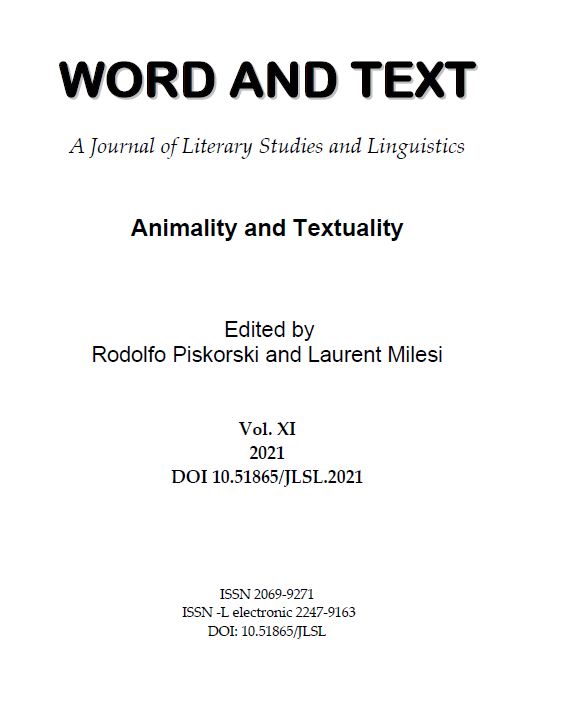
Throughout the medieval and early modern periods in Europe, animal-derived materials were routinely used in book production, and thousands of animals thus left their bodily traces in and on supposedly human cultural artefacts. Acknowledging their presence requires us to rethink how we conceive of life, embodiment and response in relation to writing and of animals in relation to textuality. The animals whose remains were turned into books not only embody meaning but their bodies became meaning in the shape of text. This article sets out to follow the material traces of these animals rendered invisible centuries ago to draw attention to the tangible animality of our literary heritage. By raising consciousness for the essential, yet often neglected role other animals played in its creation, my research troubles traditional animal-human and nature-culture binaries, calling for a more nuanced appreciation of animal lives in- and outside (human) texts.
More...
This article delves into the problem of nonhuman subjectivity in two literary texts: Jessica Grant’s Come, Thou Tortoise with the first-person tortoise narration, and Colin McAdam’s A Beautiful Truth that employs the collective primate narrator. While nonhumans cannot actively participate in the act of creation of the text, their presence in the story, arranged by the author, conveys multiple meanings. Considerations of the narrative techniques are critical for negotiating the relevance of nonhuman actors. I argue that although each author finds different methods of giving voice to nonhumans and both ensure practical significance of animal particularity, nonhuman subjectivity should not be perceived as a fixed value of the presented literary texts.
More...
Engagement with animals is a central theme in Yann Martel’s novel Life of Pi, reflected and shaped by the character-narrator Pi’s reading of animal minds. The article examines attributions of minds to animals in three types of encounters with them: observation, interaction, and narration. While in childhood Pi tends to project human temperaments and emotions onto animals, he is forced to recognize animals’ species-specific experiences as the shipwreck foregrounds his embodiment. As such, the novel introduces the logic of nonhuman psychology into narrative development, formulating an intersubjective and interspecies relationship. Furthermore, at the end of the novel, it alerts us to intellectual and therapeutic functions of animals as narrative elements through a comparison between representations of human and animal minds. The text not only identifies different forms of presence of animals in the human world, but generates insights into how narrative in general conveys and responds to complex human-animal entanglements in our reality.
More...